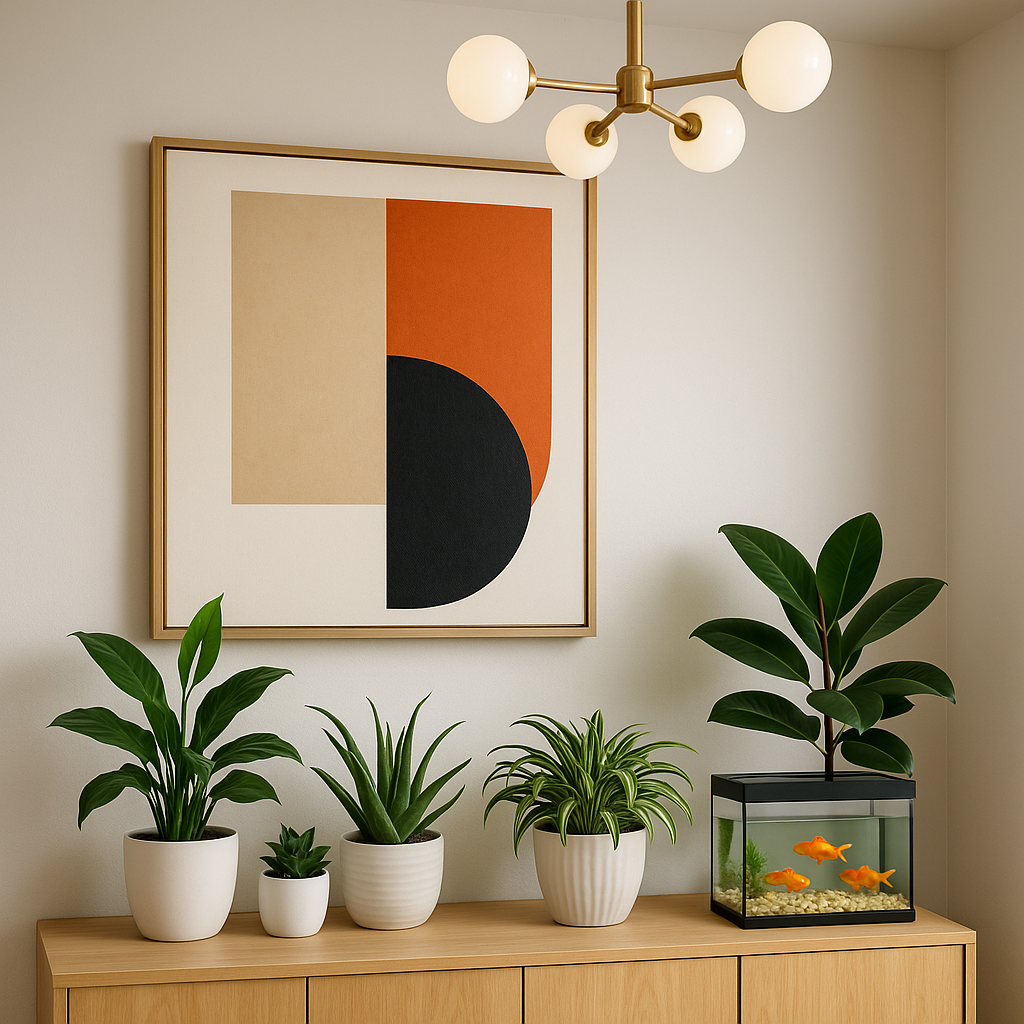Bringing plants into your apartment isn’t just about elevating your interior décor—it’s also one of the easiest and most effective ways to improve your indoor air quality. Many common houseplants have natural air-purifying abilities, removing toxins and pollutants while requiring little care. If you’re looking to breathe easier and beautify your apartment with minimal effort, this guide will help you choose the best low-maintenance air-purifying plants for apartment living.
How Do Plants Purify Indoor Air?
Plants cleanse the air through a natural process called phytoremediation. During photosynthesis, plants absorb carbon dioxide and release oxygen, but they also take in various airborne toxins through their leaves and roots, converting them into harmless byproducts or storing them in their tissues.
Decades-old NASA studies and more recent research suggest that certain houseplants are particularly effective at filtering out common indoor air pollutants such as:
- Benzene (found in paints, glues, and detergents)
- Formaldehyde (released by furniture, carpet, and cleaning products)
- Trichloroethylene (from industrial cleaners and adhesives)
- Xylene (from plastics, paints, and tobacco smoke)
- Ammonia (from household cleaners and fertilizers)
While plants alone won’t entirely replace good ventilation or air purifiers, they add a significant layer of natural air filtration—along with beauty, texture, and a calming atmosphere.
Top 8 Air-Purifying Plants That Are Also Low Maintenance
Here’s a breakdown of the best air-purifying houseplants that require minimal care, making them ideal for busy apartment dwellers:
1. Snake Plant (Sansevieria trifasciata)
Also known as Mother-in-Law’s Tongue, this upright plant is nearly indestructible.
- Purifies: Benzene, formaldehyde, trichloroethylene.
- Light: Thrives in low to bright indirect light.
- Watering: Let soil dry out completely between waterings (about every 2–3 weeks).
- Special Benefit: Releases oxygen at night, making it ideal for bedrooms.
2. Peace Lily (Spathiphyllum)
The peace lily offers glossy leaves and elegant white blooms, while quietly scrubbing toxins from your air.
- Purifies: Ammonia, benzene, formaldehyde.
- Light: Low to medium indirect light.
- Watering: Keep soil lightly moist but never soggy.
- Special Benefit: Humidity-loving, excellent for rooms with dry air.
3. Spider Plant (Chlorophytum comosum)
Perfect for hanging baskets or small pots, the spider plant is both forgiving and effective at air purification.
- Purifies: Formaldehyde, carbon monoxide.
- Light: Prefers indirect sunlight but tolerates lower light.
- Watering: Once a week; let the top inch of soil dry.
- Special Benefit: Pet-friendly and easy to propagate.
4. Aloe Vera
Known for its healing properties, aloe also purifies the air while adding a minimalist aesthetic to your space.
- Purifies: Benzene, formaldehyde.
- Light: Bright, indirect sunlight.
- Watering: Every 2–3 weeks; allow soil to dry fully between watering.
- Special Benefit: Gel inside leaves can be used for minor burns and skin care.
5. Pothos (Epipremnum aureum)
This popular trailing vine grows fast and tolerates a variety of conditions.
- Purifies: Formaldehyde, xylene.
- Light: Low to medium indirect light.
- Watering: Water when topsoil feels dry.
- Special Benefit: Excellent for hanging planters or wall shelves.
6. Rubber Plant (Ficus elastica)
The rubber plant features large, glossy leaves and is an excellent air-purifier for larger spaces.
- Purifies: Formaldehyde.
- Light: Bright, indirect light.
- Watering: Allow topsoil to dry before watering again.
- Special Benefit: Can grow into a statement plant over time.
7. Areca Palm (Dypsis lutescens)
A graceful palm that adds a tropical vibe while naturally humidifying the air.
- Purifies: Benzene, carbon monoxide.
- Light: Bright, indirect sunlight.
- Watering: Keep soil consistently moist but not soggy.
- Special Benefit: Acts as a natural humidifier.
8. Boston Fern (Nephrolepis exaltata)
Boston ferns excel at removing pollutants and thrive in humid environments.
- Purifies: Formaldehyde, xylene.
- Light: Indirect light; avoid strong direct sunlight.
- Watering: Mist frequently and keep soil moist.
- Special Benefit: Perfect for bathrooms and kitchens.
Where to Place Air-Purifying Plants in Your Apartment
Strategic placement helps both your plants and your air quality:
| Room | Ideal Plants | Why |
|---|---|---|
| Bedroom | Snake Plant, Aloe Vera | Release oxygen at night |
| Living Room | Peace Lily, Rubber Plant | Larger plants with big purifying leaves |
| Bathroom | Boston Fern, Spider Plant | Thrive in high humidity |
| Kitchen | Aloe Vera, Pothos | Absorb cooking fumes and toxins |
Quick Maintenance Tips for Healthy Air-Purifying Plants
- Dust Leaves Regularly: Wipe with a damp cloth to maximize photosynthesis.
- Rotate Weekly: Ensure even light exposure for symmetrical growth.
- Monitor Watering Needs: Overwatering is a common cause of failure—allow soil to dry as recommended.
- Use Quality Soil: Well-draining soil prevents root rot.
- Inspect for Pests: Check leaves and stems regularly for bugs or mold.
Common Problems and Easy Fixes
| Problem | Cause | Solution |
|---|---|---|
| Yellow Leaves | Overwatering | Reduce watering frequency |
| Drooping Leaves | Lack of light | Move to a brighter location |
| Brown Leaf Tips | Dry air or salt buildup | Mist leaves or flush soil occasionally |
| Stunted Growth | Poor nutrition or pot-bound roots | Fertilize or repot as needed |
Final Thoughts
Indoor air pollution may be invisible, but its effects are real. Incorporating air-purifying plants into your apartment allows you to create not just a beautiful space, but a healthier one. These low-maintenance plants work quietly in the background—absorbing toxins, releasing oxygen, and improving humidity—all while adding natural beauty and calm to your home.
Even the busiest apartment dweller can cultivate cleaner air and greener living with the right plants. 🌿
